Violin G string notes and fingering
Before playing on the G string, let’s find out which notes make up the first position. They are: G as an open string, A – first finger, B – second finger, C – third finger, and D – fourth or pinkie finger.
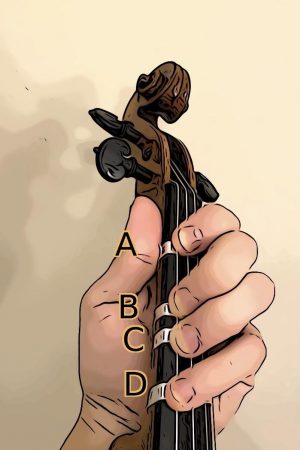
A few helpful tips to learn violin G string notes:
Make sure to follow all the steps below to make your learning process easier and faster
- Your left-hand elbow is angled appropriately so the pinkie finger is rounded when placed on the string
- Your wrist is rotated to the right or clockwise, and the base of the pinkie finger knuckle is close to the fingerboard
- The base knuckle of the pinkie is at the same level or slightly higher than the fingerboard.
Violin G string is probably the most difficult string to play and mainly because it is the farthest string to reach.
When we play on the G string we should also consider the tilt of the instrument and its placement relative to the left hand. If you still feel uncomfortable while playing on the G string you might want to reconsider your violin placement and its tilt which you can change by adjusting your setup, such as shoulder rest and chinrest. Many factors come into play here and even a slight movement of the violin can change your playing for better or worse.
When you play music, please remember that the number assigned to each finger is not the same as on a piano keyboard. When you play violin on the G string, the notes and numbers are written in the following order: the index finger is 1 ( A note), the middle finger is 2 ( B note ), the ring finger is 3 (C note), and the little finger, pinkie, is 4 ( D note) .
Sharps or flats are only a half-step higher or lower from the original note. This means that if you have A and B flat, you would put the first and second fingers almost together, allowing almost no space between them, so they are touching each other. If you have A and then A sharp, you would move the first finger just a half step higher. Don’t be surprised if you see G sharp and A flat notes. They sound the same, although written in different keys.
Keep your fingers rounded and relaxed. Do not press too much. You only have to apply light pressure to the string, so it slightly touches the fingerboard. Avoid excessive pressure. When you start practicing, watch the string closely and feel the amount of pressure you need to apply. Maintain correct left-hand posture,keeping the left-hand relaxed. Your left-hand thumb should gently carress the violin’s neck
A,B,C

A,B,C,D
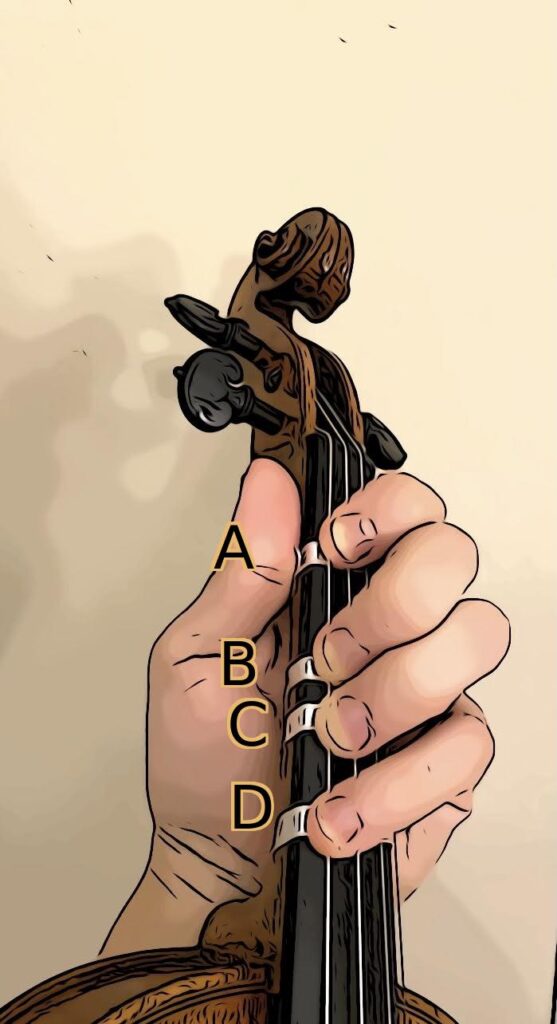
A,B,Csharp,D
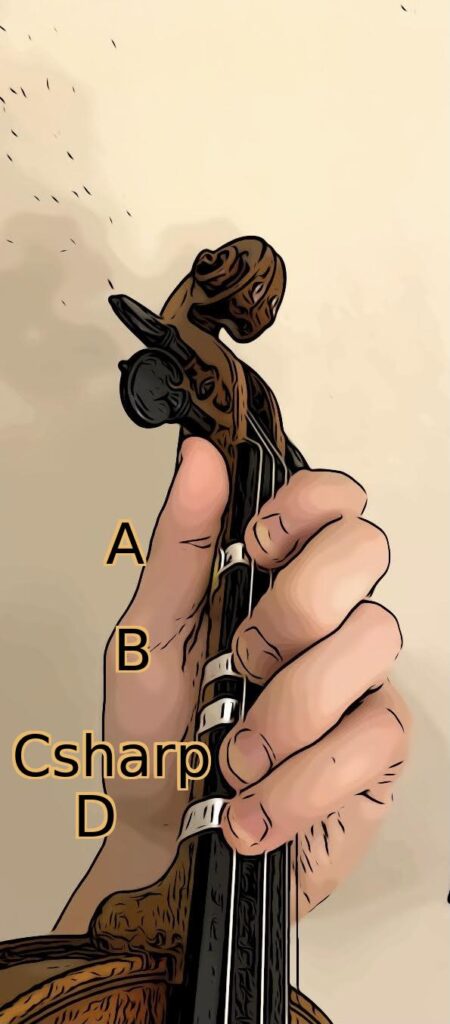
A,Bflat,C
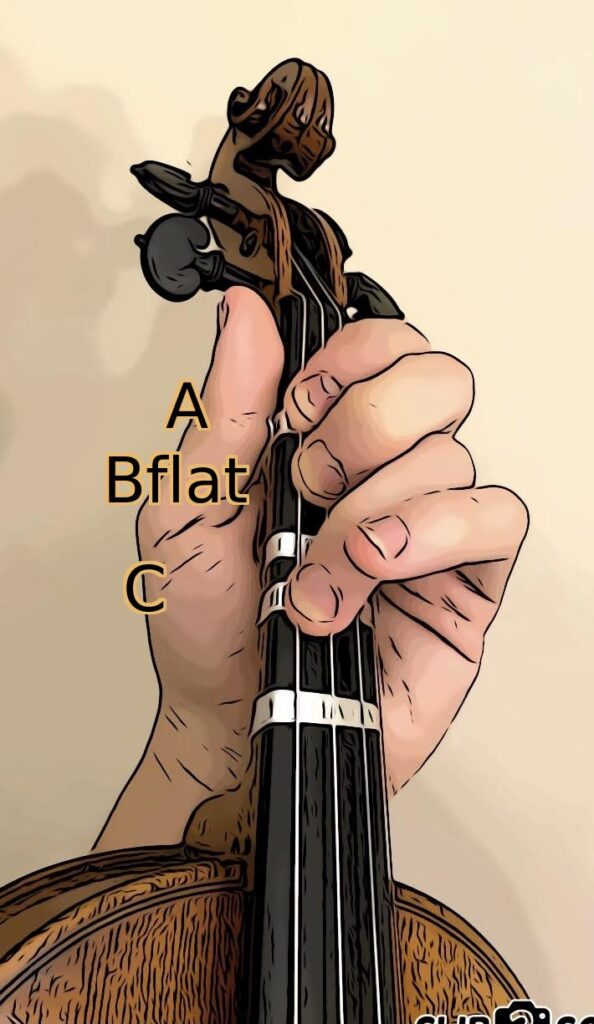
A,Bflat,C,D
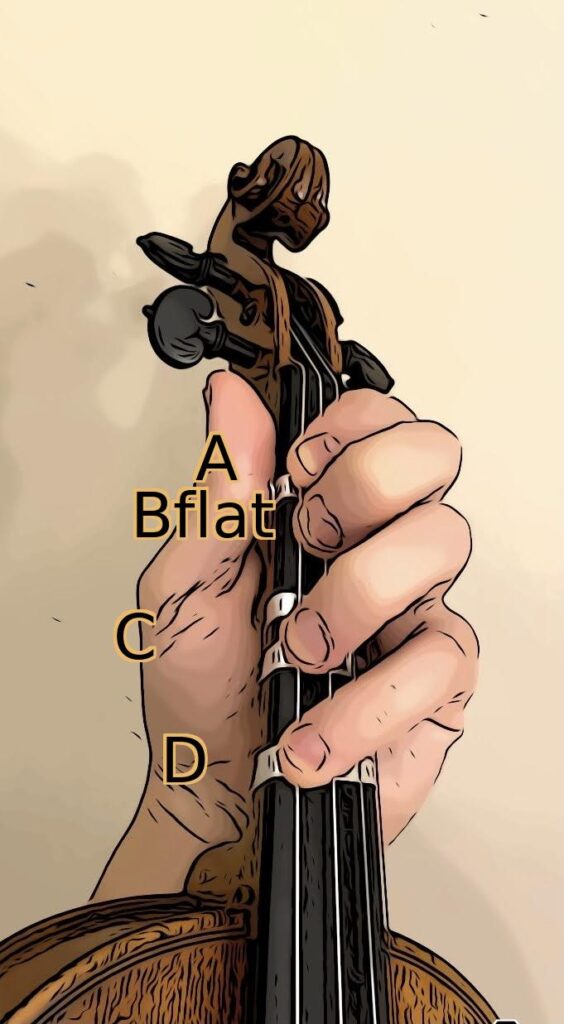
Aflat,Bflat,C,
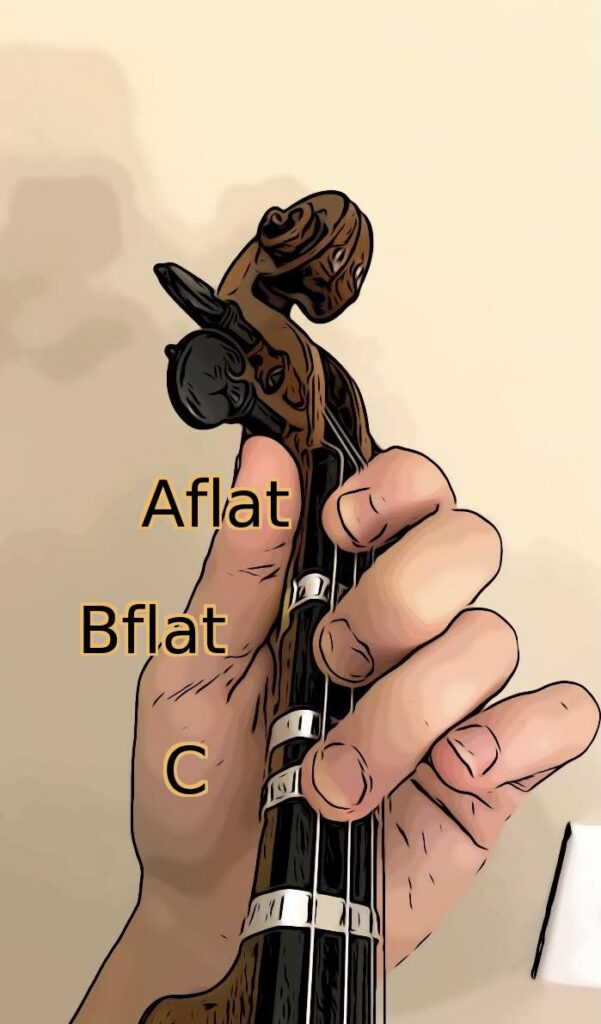
Aflat,Bflat,C,D
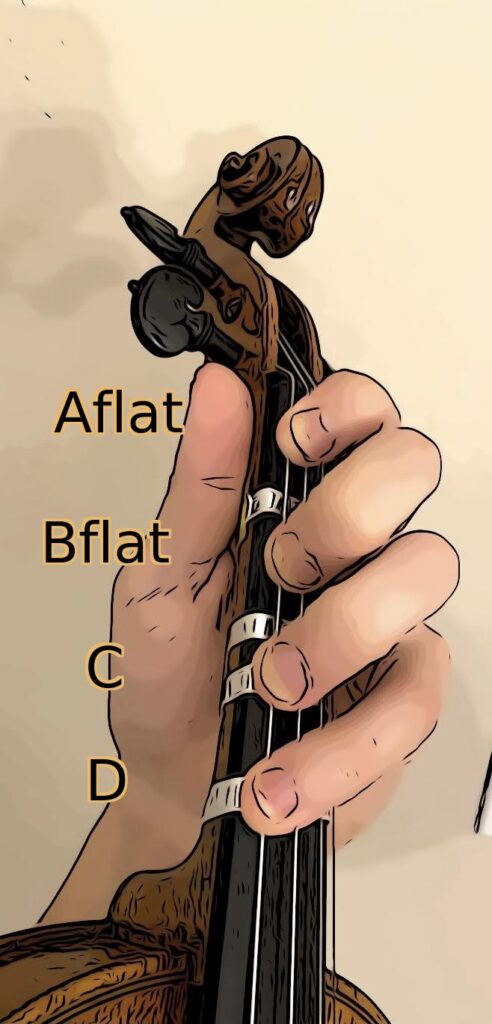
Read more:
If you have more questions, you are a student or a parent, and want to improve your violin playing, or looking for a violin tutor, you can schedule an online violin lesson with me clicking on the link below.
